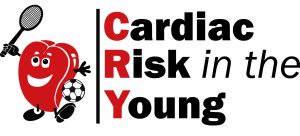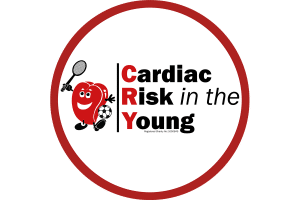
Antonio Puerta was buried yesterday, in Seville, the city where he lived, loved and died while playing football. As he was interred, the family of Clive Clarke was at Nottingham’s Queens Medical Centre, giving thanks for escaping a similar tragedy.
Clarke, a Sunderland defender on loan to Leicester City, collapsed during City’s Carling Cup match at Nottingham Forest on Tuesday night. He is understood to have suffered two heart failures and was treated with a defibrillator in the dressing room.
Puerta collapsed 35 minutes into Saturday’s match with Getaffe. He died of multiple organ failure brought on by a series of prolonged cardiac arrests. More than 10,000 fans, of local rivals Real Betis as well as Seville, paid their respects last night, filing past his coffin at the club’s Sanchez Piz Juan Stadium. Puerta, Seville born-and-bred, leaves a wife who is seven months pregnant.
Puerta was 22, five years younger than Clarke and Chaswe Nsofwa, a Zambian playing for Hapoel Beersheba in the second tier of Israeli football who collapsed while training yesterday and later died in hospital. He was the latest in a tragic line of young footballers to die of heart failure in what ought to be their peak years of fitness. Much younger players have been affected, notably Anton Reid, the 16-year-old Walsall apprentice who died while training last week, and Daniel Yorath, son of Terry and brother of Gabby Logan who died in 1992 at 15 while having a back-garden kick-around. He was on Leeds United’s books.
To the average supporter, who never warms up for his weekly five-a-side game but only suffers a bit of stiffness afterwards, the incidents do not make sense. These, after all, are fit guys, professional athletes. “It’s nothing to do with fitness,” said Dr Craig Panther, of Pure Sports Medicine who has worked with Fulham. “There will be some underlying heart problem, something they were born with, have developed, or are suffering as a consequence of a viral illness. It can happen at all levels, we just hear about the professionals.”
Indeed, the charity CRY (Cardiac Risk in the Young) estimates eight under-35-year-olds a week die of Sudden Cardiac Death, or Sudden Death Syndrome. Earlier this year it launched, in conjunction with Phillips, Save Our Athletes, a five-year screening programme for British athletes seeking involvement in the 2012 Olympics.
“Everyone is potentially at risk and the only accurate means of diagnosis is through expert cardiovascular assessment,” said Professor Greg Whyte, chairman of CRY and Professor of Applied Sport & Exercise Science at Liverpool John Moores University.
The hearts of young footballers are screened when they come into the game under a joint initiative by the Football Association and the Professional Footballers’ Association, which dates back a decade. Premier League regulations, and common sense, dictate that clubs continue to monitor players’ health. But an ECG screening will not pick up every abnormality. It did not save Reid and would probably have not, for example, have picked up the enlarged right ventricle of Marc Vivien-Foe, the former West Ham and Manchester City player, who collapsed while playing for Cameroon in Lyons in 2003. Nor would it necessarily have spotted that Puerta had arrhythymogenic right ventricular cardiomyopathny. This leads to arrhythmias (abnormal heart rhythms) and occurs in about one in 5,000 people, around two thirds of whom will have no family history of the condition.
The tragedy of most conditions associated with Sudden Cardiac Death is that were the victims not exercising hard, and so pushing their bodies, they would probably not have had an attack. Then again, even people with sedentary lifestyles have occasional bursts of energy.
The risk needs to be kept in perspective. Dr Brian Aarons, formerly Wimbledon’s club doctor, who now works with the FA’s disability teams, said:
“We are not talking about conventional heart attacks – smoking, high blood pressure, high cholesterol. These are very rare conditions, a number of different ones, but all of them very rare. Four hundred deaths sound a lot, but think of how many people are involved in sport every day. More than 100,000 Britons a year die of conventional heart disease.”
One footballer who survived is Andy Scott. In March 2005 the former Sheffield United, Brentford and Oxford forward was playing for Leyton Orient against Cheltenham when he felt abnormally drained. Scott has recalled: “Twenty minutes into the game I was struggling to breathe and my legs felt really heavy. I came off and got seen by the doctor.”
He was sent to a specialist who told him: “You’re going to have to hang your boots up or else you could die.”
Scott added: “I’d been playing for so long and everything had been fine, I’d just assumed I’d be back, but it wasn’t to be.”
Scott, then 32, had made 348 League appearances, including all 39 that season. He recognises how fortunate he was and campaigns for better cardiac screening of players with CRY.
Given his age, it is not clear whether Clarke had been screened, but as noted, an ECG test will not spot everything. Yesterday Clarke’s agent, Gary Mellor, said the player was ‘sitting up and talking’ and awaiting the results of further tests. Mellor added: “It appears Clive’s heart stopped twice, so the paramedics had to use a defibrillator. His family are very upset. We just hope he’s going to be OK.”
Leicester are due to play again on Saturday, at Plymouth. Seville, who postponed Tuesday’s Champions League qualifier at AEK Athens, will resume playing tomorrow night in the European Super Cup against Milan in Monaco. Players will wear black armbands, stadium flags will be flown at half mast and there will be a minute’s silence in addition to a short film recapping the player’s career before the match.
Given the rarity of such deaths, Puerta was, extraordinarily, the second Seville player to die after collapsing on the pitch due to a heart condition. Pedro Berruezon, who died in 1973, was also 27, and his wife was also pregnant. Their son, Pedro, is now a professional footballer with the Sugunda B side Ceuta.
Sudden Death Syndrome – Footballers who have suffered heart failure
David Longhurst, 25. A striker who began his career in the Nottingham Forrest youth team, Longhurst suffered a heart attack while playing for York City in 1990. York later named one of the stands at Bootham Crescent after him.
Robbie James, 40. the former Swansea City, Stock City and QPR star died on the pitchy playing for Llanelli AFC, where he was player-manager, in 1989. James won 47 caps for Wales.
Marc-Vivien Foe, 28. On 26 June 2003, Foe collapsed near the centre circle playing the Confederations Cup semi-final for Cameroon against Colombia. The death was said to be caused by an enlarged right Ventricle. He played for Lens and Lyons and had Premier League spells with West Ham United and Manchester City. Foe scored the last City goal at Marine Road. City retired the No 23 shirt he wore in 2002-03.
Miklos Feher, 24. Feher died playing form Benfica against Victoria Guinmaraes in January 2004. The player collapsed after receiving a yellow card and died later that night from a confirmed cardiac arrest.
Anton Reid, 16. On 20 August this year, Anton Reid passed away during training with his club Walsall on their Aston training pitch. He was in his first year with the youth team.




